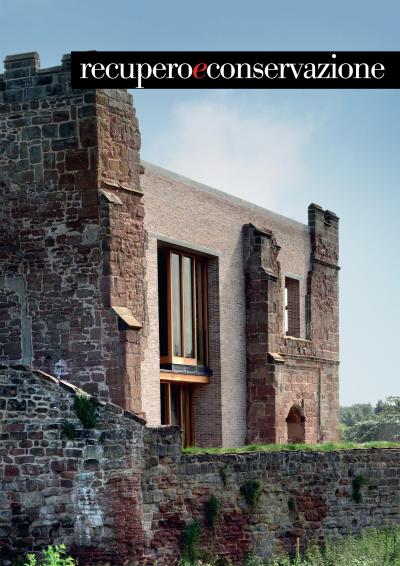ACCOGLIENZA_INTELLIGENZA
Accoglienza e intelligenza sono i fari per la valorizzazione compatibile dei nostri beni architettonici e ambientali, sono le luci che illuminano la strada per riusare i nostri monumenti, i siti minori, i borghi storici, le nostre eccellenze eno-gastro-paesaggistiche. Però se non si hanno competenze, capacità, cultura unite a creatività specifica del settore le lampadine non si accendono e ci si perde in un labirinto: le soluzioni non arrivano, il quadro si complica progressivamente, non si ricava reddito, i beni deperiscono e non trovano la possibilità di diventare motore dello sviluppo. La politica italiana degli ultimi trent’anni a livello centrale, regionale, provinciale e comunale ne è sconfortante quotidiana conferma da nord a sud della penisola. Paradossalmente il dato comune di tutti i governi è stato quello di penalizzare e rendere sempre più marginale il ruolo di questa cultura specialistica; ne consegue che nella maggior parte dei casi chi opera e chi dirige non sa far leva sui tasti giusti e ignora le procedure per trasformare in ricchezza il nostro patrimonio.

ACCELERARE
I tempi di consegna dei vari livelli di progetto in Italia sono veramente contratti. Questo atteggiamento di sottovalutazione per gli aspetti qualitativi a scapito di quelli quantitativi è testimoniato dalla legge sui lavori pubblici che tratta il progetto di restauro di un monumento alla stregua di un servizio come le pulizie dei locali. Anche in questo campo necessita un grande cambiamento.
SPEED UP
The deadlines of the various levels of project in Italy are really short. This attitude of underestimating the quality aspects and overestimating the quantity ones is attested by the law: a project of restoration of a monument is treated in the same way as a cleaning service. A big change in this field is required.
SOSTENIBILITÀ NELL’INTERVENTO SUL PATRIMONIO STORICO
Lo sviluppo di nuovi standard per orientare il processo edilizio di restauro e riqualificazione verso percorsi di sostenibilità deve necessariamente avvalersi di strumenti di validazione dei requisiti richiesti per la certificazione. Un edificio della campagna piemontese diventa il primo caso studio registrato del nuovo protocollo.
SUSTAINABLE RETROFIT EXAMPLES FOR HISTORIC BUILDINGS
The development of new standards for orienting restoration and refurbishment processes towards sustainable paths must necessarily adopt tools for requirements evaluation aimed at the building certification. A rural building settled in the Piemonte countryside becomes the first registered case study of the new GBC Historic BuildingTM rating system.
IL RECUPERO DI ASTLEY CASTLE
L’intervento di recupero di Astley Castle, a cura di Withford Watson Mann Architects riporta in vita un rudere medievale nel Warwickshire, trasformandolo in una residenza. A seguito del consolidamento della muratura esistente, al limite del collasso statico, i progettisti hanno completato le parti verticali mancanti con una nuova muratura in mattoncini di laterizio intrecciata con la preesistente. Le murature originali, di diversa fattura (arenaria, calcare, mattoncini medievali), sono state mantenute e protette con una sorta di copertura realizzata in prossimità del profilo murario superiore al fine di preservarne lo stato da futuri degradi. I progettisti concepiscono un appartamento con quattro locali al piano terra, una zona living al primo piano con vista verso l’esterno ed un locale a doppia altezza nell’ex-cortile del castello.
ASTLEY CASTLE TRANSFORMED
The restoring project of Astley Castle made by Withford Watson Mann Architects, bring to life a medieval ruin transforming it into an accomodation, in Warwickshire.
After securing its walls, on the verge of static collapse, the architects add a new brick-work woved into the ancient one.
Most of the original exterior walls made by different materials (sandstone, limestone, medieval bricks) are covered by a shallow roof in order to prevent futher degradation. The developers of this project put four bedrooms at groundfloor and the living room on the first floor to have the best view over the landscape, the courtyard became a double-high space where you are both inside and outside at the same time.
IL CENTRO STORICO DI L’AQUILA NELLA LISTA DEI SITI “2014 WATCH”
World Monuments Fund è la principale organizzazione indipendente dedicata a salvare i siti mondiali in pericolo. Per quasi 50 anni, lavorando in 100 paesi, esperti qualificati hanno applicato tecniche collaudate ed efficaci per la conservazione di importanti siti del patrimonio architettonico e culturale di tutto il mondo. Attraverso la collaborazione con le comunità locali, i governi e i possibili finanziatori, WMF cerca di ispirare un costante impegno nella tutela del patrimonio culturale per le generazioni future. La sede del WMF è a New York City, ma l'organizzazione ha uffici e filiali in tutto il mondo. Nell’ottobre 2013 il centro storico della città di L’Aquila è stato inserito nella “2014 Watch List” insieme ad altri 67 siti nel mondo.
THE HISTORIC CENTER OF L'AQUILA IN THE "WATCH 2014" LIST
World Monuments Fund is the leading independent organization devoted to saving the world’s treasured places. For nearly 50 years, working in 100 countries, its skilled experts have applied proven and effective techniques to the preservation of important architectural and cultural heritage sites around the globe. Through partnerships with local communities, funders, and governments, WMF seeks to inspire an enduring commitment to stewardship for future generations. Headquartered in New York City, the organization has offices and affiliates worldwide (www.wmf.org, www.twitter.com/worldmonuments, and www.facebook.com/worldmonuments). In October 2013, the historic center of L'Aquila has been included in the "2014 Watch List" along with 67 other sites in the world.
EU-CHIC: PROPOSTA DI UNA CARTA D’IDENTITÀ EUROPEA
Il patrimonio culturale è un tema chiave per lo sviluppo di una società europea inclusiva, riflessiva e innovativa. In quest’ambito il progetto Eu-CHIC, acronimo di European Cultural Heritage Identity Card, ha promosso studi, ricerche e analisi volte a promuovere la costruzione di una carta d’identità del patrimonio culturale, nel settore dei beni immobili, unificata tra i paesi membri.
Assumendo metaforicamente l’immagine di un iceberg, il gruppo di ricerca propone una carta d’identità che raccoglie tre livelli d’informazioni, in parte accessibili anche al pubblico e in parte protetti e accessibili previo consenso del gestore del dato o proprietario del bene.
EU-CHIC: EUROPEAN CULTURAL HERITAGE IDENTITY CARD PROPOSAL
The cultural heritage theme takes on large values not related only humanistic sector.
This aspect is even more important in a political, economic and social panorama that is affected by the on-going European financial crisis.
In fact, the policy of integration and union, that has become a central challenge for the European countries, is now in a state of crisis due to the reassertion of nationalist ideas most often related to issues of economic stability.
For this reason, the forthcoming political strategies will put at the center of their attention the cultural heritage intended as social integration through the establishment of a heritage of European characters.
In this context, the construction of a cultural, historical and shared heritage that can be transmitted to future generations is an essential objective from the reflective, inclusive and innovative community point of view.
Following this topic, it is interesting to see how a group of researchers has promoted studies, research and analysis in order to construct an identity cultural heritage card shared and unified among the country members. The studies have been conducted within the project called Eu-CHIC (European Cultural Heritage Identity Card).
The main objective of the EU-CHIC was to develop and test the guidelines required for the efficient compilation and storage of data, pertinent to each monument and structure under observation. The result that EU-CHIC proposes is a system that supports sustainable maintenance, preventive conservation and the rehabilitation of historic sites and monuments. This typology of systems may assist in the application of newly developed strategies that will be designed to evaluate efficiency, and may be employed to screen, and monitor over time, progressive changes to the physical heritage as a result of recurring human interventions and environmental impacts.
The Eu-CHIC research has suggested a pyramidal approach in reading and sharing documentation of the cultural heritage. The pyramid format should be developed into the concept of the CHIC-Iceberg, contract in CHICBERG.
The proposed CHICEBERG divides the information, concerning the cultural heritage property under consideration, according to three levels of reading:
1. Iceberg Level 1 – basic data The first level of information is represented by the upper, visible, part of an iceberg. This offers basic data on the heritage asset, and is available for a wide range of public uses, without restriction.
2. Iceberg Level 2 – pool of knowledge The second level of data, regarding the pool of knowledge is represented by the invisible part of the iceberg and will remain under the control of the heritage owner or site manager. These data categories can only be published, or made publicly available, with permission of their owner. In some cases the nature of the data may be security sensitive, and be totally restricted.
3. Iceberg Level 3 – decision making The third level of decision-making information and data is also represented by the invisible part of the iceberg, as level 2. These data categories can only be published, or made publicly available, with permission of their heritage owner or site manager and, in some cases, they may be totally restricted.
You can read more on the project at: www.eu-chic.eu.

